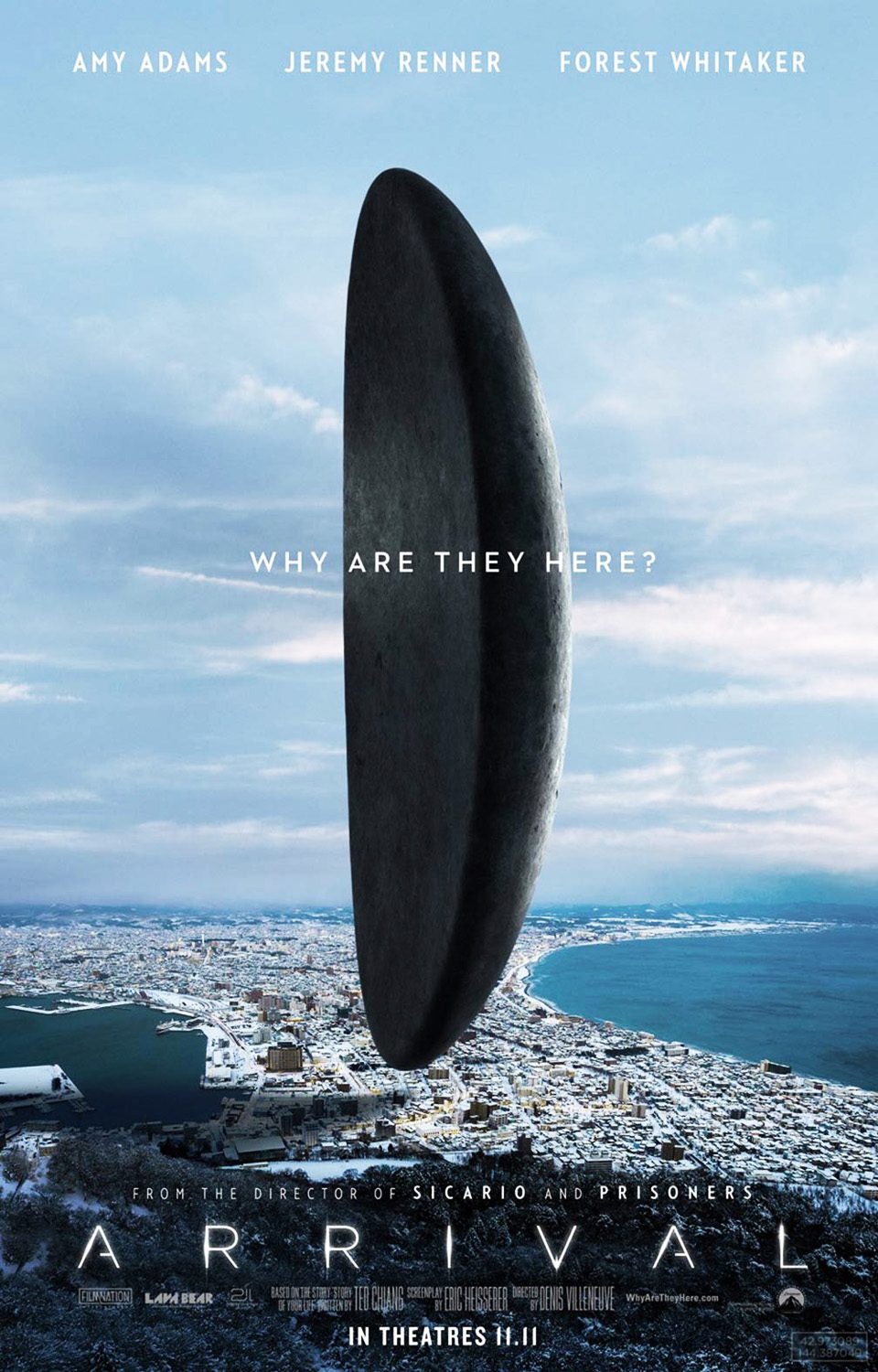

The posters for “Arrival” depict the aliens’ ships, known as shells, over various Earth locales.
By Nicole Prieto | Staff Writer
Based on a short story by acclaimed science fiction writer Ted Chiang, “Arrival” opened to wide release in U.S. theaters over the weekend — displaying a well-crafted, profound story grounded in universal messages of hope and understanding.
Louise Banks (Amy Adams) is a linguist and professor who, at the start of her lecture on Portuguese, learns of the appearance of giant concave “shells” across the globe. The dark shells are imposing obelisks reminiscent of the monoliths in “2001: A Space Odyssey.” Their physical presences appear not to disturb the atmosphere around them, and they hover just above the planet’s surface. Each harbors a gravity-defying passageway that leads to a clear, glass-like pane.* The panes allow humanity to see and speak with the multi-limbed aliens dubbed “heptapods.”
Louise is soon recruited by Colonel Weber (Forest Whitaker) as a head expert in a team of U.S. scientists attempting to bridge communications between humanity and the aliens. She and physicist Ian Donnelly (Jeremy Renner) engage in a prolonged linguistics lesson with two heptapods, nicknamed Abbott and Castello, with each party attempting to learn the other’s speech and writing. Under the pressures of international distrust and national security concerns, Louise spends months attempting to ask the pair a simple question: “What is your purpose on Earth?”
The editing and cinematography of “Arrival” warrants comparison to 2010’s “Inception”; without spoiling too much, it should be noted that filmgoers will not be disappointed by the unexpected twist that the movie executes in a poignant, understated reveal. While Chiang’s original story, titled “Story of Your Life,” is a less harried reflection on the aliens’ mysterious presence, “Arrival” is swept up by global mass hysteria and militarization. Fear-mongering disc jockeys, mass looting and communications blackouts are only a handful of the consequences several nations grapple with as their translation groups work to discover the root of the aliens’ visit. This is a large change that provides motivation for the characters to work diligently, and it is, thankfully, a well-handled adaptation.
The immense heptapods are a species with an entirely different awareness of order and consequence than humanity. The film takes pains to indicate how life and death are circular and intertwined, represented by the symbolic, written language the aliens paint in the air like freestanding calligraphy. The atmosphere the heptapods breathe in is an opaque mist that blurs their features and obscures any details of their spaceship interiors. Perhaps as a way to downplay their monstrosity, the film does not try to hide too much of what they look like: tall, multi-armed, tree-like beings capable of swimming through the air like cephalopods.
Thematically, “Arrival” is no exception to the longstanding science fiction practice of invoking motherhood and creation. We see this in works like “Frankenstein” where the eponymous main character forces nature to reveal the secret of life to him; in the destructive motherhood exploited by the Xenomorphs of the “Alien” franchise; in zombie or infected films where new, invasive species are forcibly “born” from among humanity’s ranks. These are narratives that tell us that usurping creation is destructive, that any deviation from traditional conception is perverse. But in “Arrival,” something very different, and very beautiful, happens.
One of the first things we learn about Louise is the loss of her daughter from an unknown illness. How she comes to understand her grief is influenced by her prolonged interaction with the heptapods. Intermittent, invasive visions of her child become more pronounced as her conception of reality evolves. Rather than rely on the anxiety of parenthood as a narrative device that invites death, “Arrival” uses it as a hopeful conduit between Louise’s self-understanding and her understanding of others.
The atmosphere is appropriately bleak throughout the film. The weight of Louise’s loss is epitomized by persistent overcast skies. Her visions haunt her like living shadows cast against the pervasive sense of urgency in the Montana military base she works in. Even most of her interactions with the heptapods are done through a clear partition obscured by the aliens’ gray-opaque atmosphere. And it is her triumph over the growing uncertainty around her, as countries become increasingly distrustful of the heptapods’ intentions, that ultimately shines a light through the darkness and fear of the unknown.
By mastering the aliens’ language, Louise is able to bridge the gap between their two species. This perhaps reflects one major lesson in the film: Meeting the Other with open, vulnerable curiosity is to confront ourselves in all the myriad ways that life may exist. There is nothing to be gained by facing an unfounded threat of alien invasion with bravado or bigger guns.
“Arrival” is a prescient reminder that mutual understanding is our greatest gift to one another — and our best guide in navigating an unknown future.
*A previous version of this story incorrectly stated that the shells were unmanned and only featured communication panes. This was written partly in confusion with elements from the short story, where the aliens’ ships were presumably out of orbit and the heptapods interacted with humanity through communication devices known as “looking glasses.” The Duquesne Duke regrets the error.



